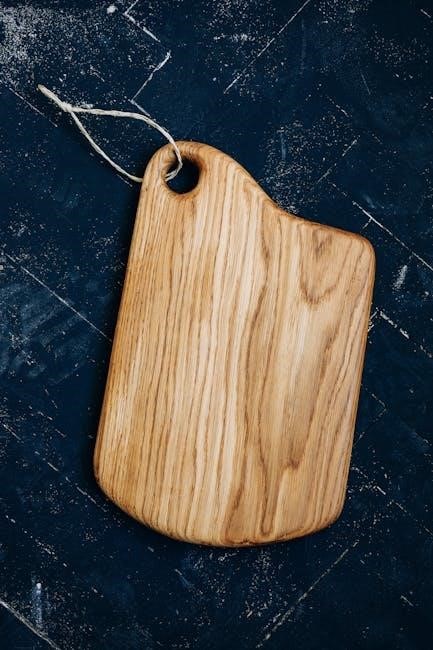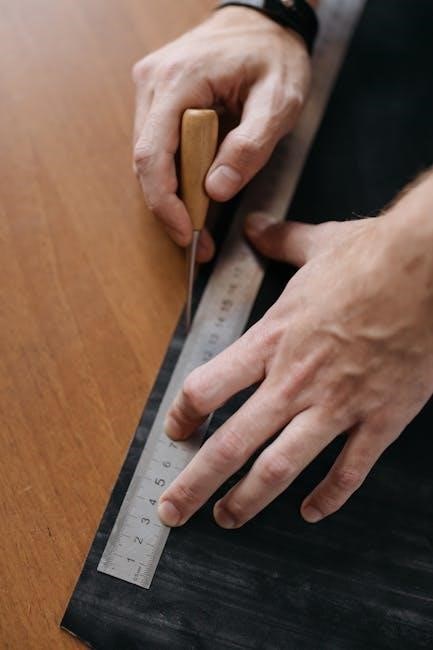Valve guides require precise cutting for optimal engine performance, using specialized tools and techniques to achieve accurate results, ensuring proper valve stem movement and minimizing wear, with careful measurement.
Understanding the Importance of Valve Guides
Valve guides play a crucial role in the overall performance and longevity of an engine, as they facilitate the smooth movement of valve stems, reducing friction and wear. The guides are subject to constant stress and heat, which can lead to deterioration over time. Properly functioning valve guides are essential to prevent engine damage, improve fuel efficiency, and reduce emissions. A thorough understanding of the importance of valve guides is necessary to appreciate the need for precise cutting and maintenance. By recognizing the critical function of valve guides, engine technicians can take proactive measures to inspect, repair, and replace them as needed, ensuring optimal engine operation. Effective valve guide maintenance can help prevent costly repairs and extend the lifespan of the engine, making it a vital aspect of engine care and maintenance, with significant benefits for engine performance and reliability.

Types of Valve Stems and Guides
Valve stems and guides vary in design, including tapered and straight types, with different materials and sizes, affecting engine performance and repair requirements, using various tools and techniques.
Tapered Valve Stems and Their Characteristics
Tapered valve stems are designed with a smaller diameter at the head end, creating a larger clearance where temperatures are highest, reducing the chance of galling with unleaded fuel and narrow three-angle valve seats. This design feature is critical in modern engines, where the constant friction between the guide and stem can lead to wear and damage. The tapered stem allows for a more even distribution of heat and stress, minimizing the risk of valve guide wear and tear. When working with tapered valve stems, it is essential to use the correct tools and techniques to avoid damaging the valve or guide. By understanding the characteristics of tapered valve stems, technicians can better diagnose and repair issues related to valve guide wear, ensuring optimal engine performance and longevity. The use of tapered valve stems has become increasingly common in late model engines.
Measuring and Inspecting Valve Guides
Technicians use specialized tools to measure valve guide clearance, checking for wear and damage, with precise calculations and careful inspection, ensuring accurate results always.
Checking Clearance and Wear on Valve Guides
Checking clearance and wear on valve guides is a critical step in maintaining optimal engine performance. Technicians use specialized tools to measure the clearance between the valve stem and guide, checking for excessive wear and damage. This process involves carefully inserting a dial indicator into the valve guide and measuring the clearance at multiple points. The results are then compared to the manufacturer’s specifications to determine if the valve guides need to be replaced or repaired. Proper clearance is essential to prevent excessive wear and damage to the valve stem and guide, which can lead to decreased engine performance and potentially cause costly repairs. By regularly checking clearance and wear on valve guides, technicians can help ensure that the engine runs smoothly and efficiently, and identify any potential issues before they become major problems. Regular inspection and maintenance can help extend the life of the engine.

Valve Guide Repair and Replacement
Technicians use specialized tools to repair or replace worn valve guides, ensuring proper fit and function, and restoring engine performance, with careful measurement and inspection always required.
Consequential Damage to Valves from Worn Guides
Worn valve guides can cause consequential damage to valves, leading to premature wear and potentially costly repairs. The constant friction between the guide and stem can lead to excessive heat buildup, causing the valve to become damaged or warped. This can result in decreased engine performance, reduced fuel efficiency, and increased emissions. Furthermore, worn valve guides can also cause the valve to become loose, leading to valve train noise, and potentially causing the valve to fall out of place. To avoid these issues, it is essential to inspect and replace worn valve guides promptly, using specialized tools and techniques to ensure proper fit and function. By doing so, technicians can help prevent consequential damage to valves and maintain optimal engine performance. Regular maintenance and inspection of valve guides can help identify potential issues before they become major problems.

Standard Values for Valve Guide Clearance
Standard valve guide clearance values range from 0.001 to 0.005 inches, depending on engine type and manufacturer specifications, using precise measurement tools.
Inspecting Engines Valve Guides for Wear and Damage
Inspecting engine valve guides for wear and damage is a crucial step in maintaining optimal engine performance. The valve guides experience a lot of wear due to constant friction between the guide and stem. To inspect the valve guides, one must check for worn margins, pitting, and burnt exhaust valves. The valve stem to guide clearance should be checked and measured using precise tools. This measurement will help determine if the valve guides are worn out and need replacement. A worn-out valve guide can cause consequential damage to the valves, leading to poor engine performance and potentially costly repairs. It is essential to follow proper inspection procedures to ensure accurate results and make informed decisions about repairs or replacements. By inspecting the valve guides regularly, engine owners can prevent damage and maintain their engine’s performance. Regular inspection is key to extending the life of the engine.

Tools and Techniques for Valve Lapping and Repair
Specialized tools and techniques are used for valve lapping and repair, ensuring precise results and optimal engine performance, with careful measurement and attention to detail always required for success.
Using a Hand Drill for Valve Lapping and Refacing
Valve lapping and refacing can be accomplished using a hand drill, which provides a cost-effective and efficient method for repairing valve guides. The drill is typically attached to a suction cup or a valve lapping tool, allowing for precise control and movement. When using a hand drill for valve lapping and refacing, it is essential to exercise caution and attention to detail to avoid damaging the valve or surrounding surfaces. The drill’s high speed and rotational force can easily gouge or scratch the valve seat, requiring careful manipulation and frequent inspection. By utilizing a hand drill and the appropriate tools, individuals can successfully reface and lap valves, restoring optimal engine performance and extending the lifespan of the valve guides. This method is particularly useful for DIY enthusiasts and mechanics seeking to repair valve guides without extensive equipment or expertise.
Common Mistakes to Avoid When Replacing Valve Guides
Incorrect valve guide installation and sizing can lead to premature wear and engine damage, using proper techniques and tools is essential for success, minimizing errors and ensuring optimal results always.
Shortening Valve Guides and Potential Consequences
Shortening valve guides can be a delicate process, requiring careful consideration of the potential consequences, including altered valve stem movement and clearance, which can impact engine performance and longevity, using specialized tools and techniques to avoid errors. The process involves cutting and re-machining the valve guide to the desired length, which can be challenging, especially when working with high-precision engine components. It is essential to follow established guidelines and manufacturer recommendations to ensure a successful outcome, minimizing the risk of engine damage or premature wear, and maintaining optimal engine performance, with proper measurement and inspection techniques, to verify the accuracy and integrity of the shortened valve guide, and prevent potential consequences, such as reduced engine efficiency and increased maintenance costs, by taking the necessary precautions and using the right tools and techniques.
